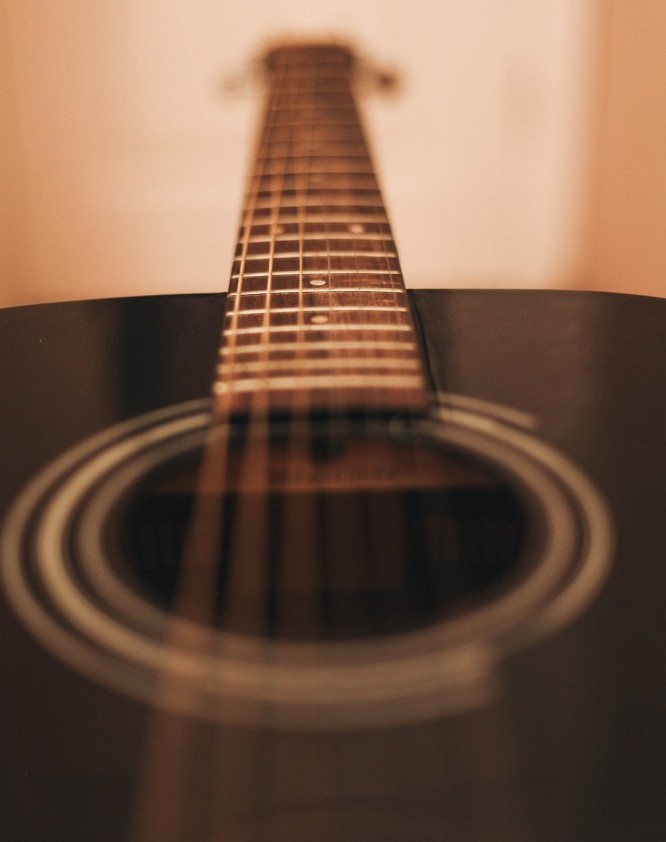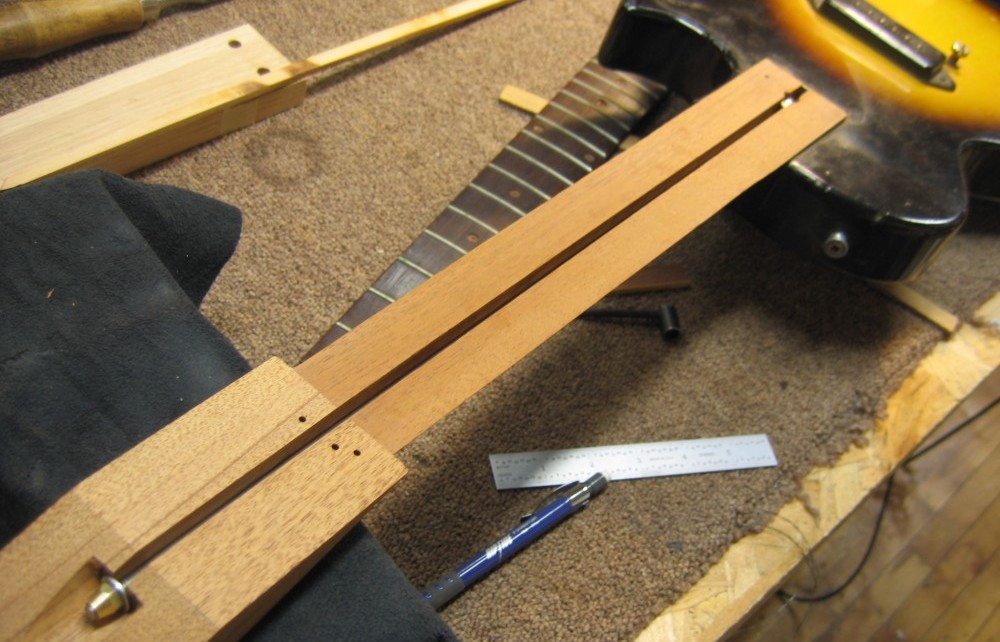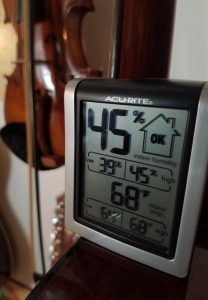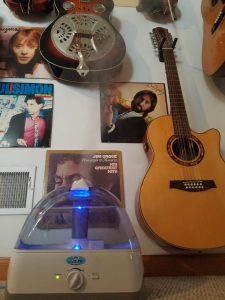We’ve all heard it: a famous musician from the classic rock era comes to town for a concert, sells out the arena, and puts on a great show. We either hear them at the show or on some new live recording shooting up the YouTube charts. But… that voice. That’s not the voice you remember from those number one hits and singles! It’s… kinda the same, but, it just doesn’t sound as good.
Say it with me: it’s called AAAAAAGE.

Our heroes can’t help it; they’re doing the best they can with what’s left of what they were given. With age, comes, usually, a lessening of the harmonic range of some instruments, the voice being a good example. Guitar strings, in an even more dramatic fashion, lose their sheen and end up sounding quite dull and lackluster over time, despite the marketing hype from certain string manufacturers who would have you think they’ve ‘fixed the problem’.
This disintegration of full-spectrum tone is why we change our strings often if we’re in the habit of playing live or recording in the studio with our axe. Fresh strings make what you play sound sooooooo good. That’s because all the overtones possible are there when the steel (or nylon) is first stretched taut.
With that in mind, here are a few tips and tricks that can help you make the most of your strings lifespan, and help you cut some headaches off at the pass before they can enter into your sacred music sanctum.
Size Matters
Do you know what size strings your guitar is set up for? Did you even know that your guitar is set up for a specific string gauge?! It is, but if you’ve never had it maintenance this might be a brave new world for you to explore. Here’s the deal: the gauge of your strings is basically how thick each string is. Guitar strings are sold in sets that are either hard, medium, light or super-light gauge.
 Now, in the neck of your guitar is a metal rod, called a truss rod, that is there to help the wooden neck of the guitar handle the incredible stress that strings are putting on it when they are tightened. Did you know that even with a light string set on a guitar that the total amount of tension that all strings produce is around 160 pounds! If you’re a Stevie Ray Vaughn and like the heavy sets, then you’re talking well over 200 pounds! That’s a lot of force, and the truss rod helps the neck handle the pressure.
Now, in the neck of your guitar is a metal rod, called a truss rod, that is there to help the wooden neck of the guitar handle the incredible stress that strings are putting on it when they are tightened. Did you know that even with a light string set on a guitar that the total amount of tension that all strings produce is around 160 pounds! If you’re a Stevie Ray Vaughn and like the heavy sets, then you’re talking well over 200 pounds! That’s a lot of force, and the truss rod helps the neck handle the pressure.
BUT… the truss rod is always “set up”, or prepared in the factory, for a certain gauge of string. Most of the time it’s for medium gauge, but there’s no way of knowing for sure what the factory did, so it’s always best, even if you never do it again, to have your guitar set up by a professional at least once. This way you can make sure that you’re not going to bend the neck, either forward or backward, by putting too much, or too little, pressure on it via the strings you buy.
Cross-Over to a Better Musical Figure
Once you’ve correctly paired your guitar’s set up with strings that are the correct gauge and that you shall ongoingly use, the next step is to put ’em on… and get playin’! But let’s make sure that when we do that, we’re also optimizing the string installation for ongoing consistency. In other words, you don’t really want your guitar to ever go out of tune really, do you?
One simple trick that can make a rockin’-in-the-free-world of difference in your performances is the cross-over string install method. Now, if your guitar going out of tune is something you like, well… you can check out here; this tutorial is definitely not for you. But if quality intonation is something you strive for, start implementing this technique immediately and you will notice an obvious, immediate improvement in the stability of your guitar’s intonation. It’s really not that hard; just a matter of adding a step to what you normally do already.
Because this is a tweaky little technique, I filmed a short video for you watch that will show you exactly what method to use. A lot better than trying to describe it! Check it out:
Clean Hands – Rock’n’Roll Heart

Wanna know something that causes strings to age and lose their luster fast? Dirt, oils and salt – all the deteriorating elements that are coming off of your skin as you play!
Of course, some playing moments are worse than others. If you’re gigging live at all, you tend to exude and pass on all manner of string killing grime since it’s typically hotter (darn spotlights), you’re moving more (impressing that person in the front row you think is hot) and you’re shaking hands, high-fiving and swapping biz cards with LOTS of people. And their germs. And their dirt.
I won’t even go into those who eat as they play, and don’t wash off the mayo, or honey, or hot wings sauce, or… the list goes on. Aaarghshh…!!
Do yourself a favor: before you play an instrument, wash your hands. Best for you; best for your instrument.
Unless you want to spend more money on strings than you have to? 😉
Water That’s Measured…
Now that cold weather has hit, I’m gonna also take us off on a related tangent today. You probably aware of how temperature and weather can affect your guitars and, derivatively, your strings. But most of us keep the temperature of our homes pretty consistent throughout the year; we humans like our creature comforts. So there’s nothing to worry about, right?
 Well, one thing that often is overlooked is the “relative humidity” within our homes. This, more than temperature, is what usually causes issues with our fine wooden friends. It can cause wood to literally come apart at the seams. Too high and wood swells. Too little and it shrinks. Both cause breakage. And both will affect the intonation, action and longevity of your strings.
Well, one thing that often is overlooked is the “relative humidity” within our homes. This, more than temperature, is what usually causes issues with our fine wooden friends. It can cause wood to literally come apart at the seams. Too high and wood swells. Too little and it shrinks. Both cause breakage. And both will affect the intonation, action and longevity of your strings.
The picture on the right shows my humidity monitor in my studio right now. It’s not just luck that caused the percentage to be exactly what’s recommended for wooden instruments; it’s my commitment to keep my babies well-maintained and in an environment conducive to them sounding their best.
You can pick up this exact humidity monitor here on Amazon. It’s cheap, and it helps you stay apprised of a very important factor in the health and stability of your instruments. Don’t even think about not doing it – your instruments need your help!
…and Water That’s Spread
 Now, once you’ve got a humidity monitor, what if it tells you that your place has water vapour below 35%? Well, when you turned on your home heater for the winter cold, it is blowing hot, dry air all day and night at your investments, so that’s why it’s so low. This is not a good pairing; you must do something about it. Get a simple humidifier, like this quiet one, and keep all your instruments near it, like cowboys around a prairie fire.
Now, once you’ve got a humidity monitor, what if it tells you that your place has water vapour below 35%? Well, when you turned on your home heater for the winter cold, it is blowing hot, dry air all day and night at your investments, so that’s why it’s so low. This is not a good pairing; you must do something about it. Get a simple humidifier, like this quiet one, and keep all your instruments near it, like cowboys around a prairie fire.
Run it every day, 24 hours a day, until you turn off the heater when spring comes. Put its setting so that your monitor reads 45%, or close to it. Doing this, you will safeguard your instruments and strings and be ready at the drop of a downbeat for any gig with an awesome, maintained tool that will make you look, and sound, better.
And while you’re at it… pass me some o’ those beans.
Surface Scratching…
Obviously there’s so much more we could go into concerning strings, and in future posts… we will! Part of my recording today is to catch for eternity the sound of my axe with a specific type of string. In future sessions, I will use other string sets, and once I get to about five or so I’ll upload my findings and we’ll discuss BRANDS. That’s should get some opinions flying like fisticuffs!
As always, it’s about the music, so continue (or start!) taking care of your wooden companions in tone, and their finicky strings, so that you, and they, can symbiotically create music that is greater than the sum of your parts. I’ll be listening. And making my own, of course.
Do you have other methods of caring for your instruments not mentioned here? Are you even more of a doting mother/father over your precious ones??! Lemme know by leaving a comment.
In the meantime, go… make… sounds!!
Teaj

There sure is, Nancy. First, make sure you watch my video here to see HOW to put your strings on. If you use the cross-over method you’ll stay in tune a LOT better.
Also, to check your tuning it couldn’t be easier these days: just download a free tuning app for your phone. On my Android I use “PitchLab Lite” and it works REALLY well.
Do you still have your Gibson??
Humidity should optimally be at 45%, Arian, like it shows in the picture above. So if you live in a place that has TOO much humidity (to know that, get a monitor), invest in a DE-humidifier to leech the excess water out of the air.
Here in the cold north we have to humidify because we run house heaters through the winter that really dry out everything, including US. My home personally has a whole-house humidifier and it still only gets it to about 37%.
Lemon oil is also really great for wood. I use orange just because I like that smell best, but I’d use lemon oil in a heartbeat!
Glad to hear you’re serious about taking care of your instruments!
So humidity is good for acoustic guitars? I live in a humid place so if thats the case then good news for me. Whenever I change strings I like to add lemon oil to the naked fretboard to smoothen the wood and add some polish. It also cleans the grit as well. Smells great too!
I had a Gibson acoustic guitar most of my young life and really enjoyed reading your website. I like the way you write as it is musical in a way too. I look forward to visiting here and reading more posts. I remember always being a bit out of tune and I wonder if there are easy and effective ways to tune an acoustic guitar? I never thought of the effect of humidity on the wood and the germs on the strings,is there a way to clean the actual strings? Thank you for your post!